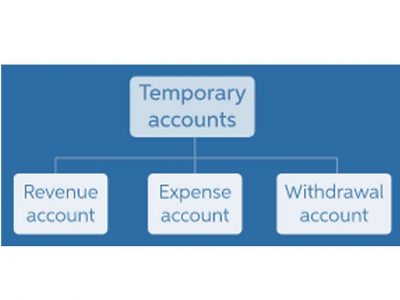For example, we issue $500,000, three-year, 6% bonds for $512,000 instead. We need to pay interest at the end of each year during the period of the bonds. Using the straight-line method, we can amortize the $15,000 bond discount by dividing it by the 3 years life of the bonds which gives the result of $5,000 per year.
- The table is commonly used by the issuers of bonds to assist them in accounting for these instruments over time.
- Short-term bonds are often issued at a bond discount, especially if they are zero-coupon bonds.
- Note that under the effective interest rate method the interest expense for each year is decreasing as the book value of the bond decreases.
- The journal entries for the years 2023 through 2026 will be similar if all of the bonds remain outstanding.
- The discount will increase bond interest expense when we record the semiannual interest payment.
- Under this method, the amount of interest expense in a given accounting period correlates with the book value of a bond at the beginning of the accounting period.
Unlike the real interest rate, the effective interest rate does not take inflation into account. If inflation is 1.8%, a Treasury bond (T-bond) with a 2% effective interest rate has a real interest rate of 0.2% or the effective rate minus the inflation rate. An interest-bearing asset also has a higher effective interest rate as more compounding occurs. For example, an asset that compounds interest yearly has a lower effective rate than an asset that compounds monthly.
Likewise, its normal balance is on the credit side which is the same as the normal balance of the bonds payable account. And the amortization can be done through the straight-line method if the amount of bond discount or bond premium is immaterial. On the other hand, if the discount or premium amount is material or significant to financial statements, we need to amortize it through the effective interest rate method.
What Is an Amortized Bond?
An amortized bond is one in which the principal (face value) on the debt is paid down regularly, along with its interest expense over the life of the bond. A fixed-rate residential mortgage is one common example because the monthly payment remains constant over its life of, say, 30 years. However, each payment represents a slightly different percentage mix of interest versus principal. An amortized bond is different from a balloon or bullet loan, where there is a large portion of the principal that must be repaid only at its maturity.
- With the straight-line method, you are debiting more interest revenue each year until there is no remaining bond discount or premium.
- The bond discount is the difference by which a bond’s market price is lower than its face value.
- An investor who purchases this bond has a return on investment that is determined by the periodic coupon payments.
- If that number is lower than the par value of the bond, it’s discounted; but if the figure is higher, the bond is selling for a premium.
- In this case, the amortization amount of the bonds’ discount for each period in the payment of the cash coupon is added to get the expense by real interest for net income calculation.
To illustrate the discount on bonds payable, let’s assume that in early December 2021 a corporation prepares a 9% $100,000 bond dated January 1, 2022. The interest payments of $4,500 ($100,000 x 9% x 6/12) will be required on each June 30 and December 31 until the bond matures on December 31, 2026. The second way to amortize the discount is with the effective interest method. This method is a more accurate amortization technique, but also calls for a more complicated calculation, since the amount charged to expense changes in each accounting period. Bond discount arises when the rate of return expected in the market on a bond is higher than the bond’s coupon rate. This causes the bond to sell at a price lower than the face value of the bond and the difference is attributable to bond discount.
New here? Not sure where your financial journey should be headed?
This journal entry will reduce the interest expense on the income statement that we record at the time of interest payment. Hence, we need to make the amortization of the bond discount in order to have the carrying value of bonds payable equaling the face value of the bond at the end of the bond maturity. One of the biggest misconceptions surrounding amortizing discounts and premiums is that they should never be negative. This is not the case; however, you must follow certain guidelines when it comes to reporting negative amounts on your balance sheet if you choose to take them into account in determining net income. A premium bond is one for which the market price of the bond is higher than the face value.
Finish Your Free Account Setup
In this case, the carrying value of the bonds payable on the balance sheet will equal bonds payable minus the bond discount. On December 31, year 1, the company will have to pay the bondholders https://kelleysbookkeeping.com/ $5,000 (0.05 × $100,000). The cash interest payment is the amount of interest the company must pay the bondholder. The company promised 5% when the market rate was 4% so it received more money.
Amortization of Bond Discount – Explained
For example, a bond with a par value of $1,000 that is trading at $980 has a bond discount of $20. The bond discount is also used in reference to the bond discount rate, which is the interest used to price bonds via present valuation calculations. It should also be noted that, depending on the issuer, amortized bonds can be tax-exempt or taxable. There are strategies that can be leveraged to optimize the tax efficiency of an investor’s bond portfolios, such as investing in tax-exempt bonds. Bonds are generally thought to be lower risk than stocks, which makes them a popular choice among many investors.
Bonds Payable Outline
If the bond’s stated interest rate is greater than those expected by the current bond market, this bond will be an attractive option for investors. At the end of your fifth year of payments, the monthly payment figure remains the same. Still not much toward a total principal loan balance of $200,000 but https://quick-bookkeeping.net/ making some progress in retiring the debt. If the bond matures after 30 years, for example, then the bond’s face value plus the interest due is paid off in monthly installments. The preferred method for amortizing the bond premium is the effective interest rate method or the effective interest method.
When a company issues bonds to generate cash, bonds payable are recorded and listed as a liability on the company’s balance sheet. Treasury or a corporation sells, a bond instrument for a price that is different from the bond’s face amount, the actual interest rate earned is different from the bond’s stated interest rate. In either case, the actual effective interest rate differs from the stated rate. For example, if a bond with a face value of $10,000 is purchased for $9,500 and the interest payment is $500, then the effective interest rate earned is not 5% but 5.26% ($500 divided by $9,500).
The format of the journal entry for amortization of the bond discount is the same under either method of amortization – only the amounts recorded in each period will change. Since the effective interest rate of the market is https://bookkeeping-reviews.com/ lower than the coupon rate offered by the bank, Lopez Co. does not receive the full amount equivalent to the face value of the bond. Lopez Co. has issued a bond equivalent to $10,000,000, for a time to maturity of 5 years.
The difference between both, the actual cash received as well the face value is debited as a discount offered on bonds payable. After six months, the issuer will make interest payments amounting to $300,000 (10,000 × $1,000 × 6%/2). However, the interest expense will be higher than the coupon payments due to amortization of bond discount.
At the end of the 3rd year, the $15,000 bond discount will be become zero ($15,000 – $5,000 – $5,000 – $5,000) and the carrying value of the bonds payable will equal $500,000 ($500,000 – $0). Accretion can be accounted for using a straight-line method, whereby the increase is evenly spread throughout the term. Using this method of portfolio accounting, accretion of discount can be said to be a straight-line accumulation of capital gains on a discount bond in anticipation of receipt of par at maturity. This $417 consists of 4 months’ cash interest plus $17 of the amortized discount. Note that from the investor’s perspective, the discount increases interest revenue, and from the issuer’s point of view, it increases interest expense. This procedure ensures that after the discount or premium is fully amortized, the investment account will reflect the bond’s maturity value.



